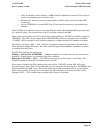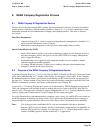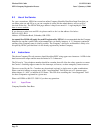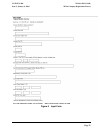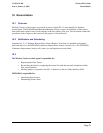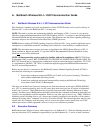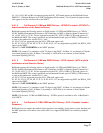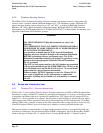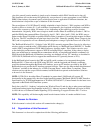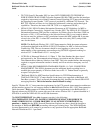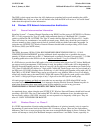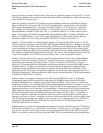
CG-EWCG-001 Wireless E911 Guide
Issue 3, January 6, 2004 BellSouth Wireless E9–1–1/SS7 Interconnection
Guide
A. BellSouth Wireless E9–1–1/SS7 Interconnection Guide
A.1 BellSouth Wireless E-9–1–1/SS7 Interconnection Guide
This document is intended to provide an explanation of how SS7/ISUP trunks can be used for delivery of
Wireless E9-1-1 calls in the BellSouth E9-1-1 serving area.
NOTE: The need to provide and maintain the reliability and integrity of E9-1-1 service is a top priority.
Therefore, deployment/implementation of SS7/ISUP trunking for E9-1-1 is subject to due date negotiation
between BellSouth and any interconnection customer. The migration onto this newer signaling technology
cannot be subject to the Customer Desired Due Date (CDDD) processes.
NOTE:Failure to deploy SS7/ISUP signaling correctly for Wireless E9-1-1 may result in significant service
interruptions or undesirable anomalies, including but not limited to a total inability to complete the call.
NOTE: This document uses acronyms and terms as described in the NENA Master Glossary of E9-1-1
Terms available at http://www.nena9-1-1.org in the NENA Recommended Technical Standards section.
Click h
ere
to access this information.
NOTE: All interconnecting carriers need to be familiar with and in compliance with TR 73554 Issue
D, December 2002 (or later), BST GUIDELINES TO TECHNICAL PUBLICATION GR-905-CORE. The
BST CCS Network has its own particular architectural variations and technological capabilities. TR 73554
is a supplement to GR-905.) TR 73554 is available through the appropriate BellSouth Interconnection
Services Account Representative.
Before any new device is connected to the BellSouth Common Channel Signaling Network (CCSN) it
must meet the following two requirements:
1. It must have undergone and passed MTP Level 2 and Level 3 protocol testing by Telcordia or
other suitable independent lab testing facility
2. It must have undergone and passed interoperability testing at the Bellsouth Technology
Assessment Center (BTAC) in Birmingham
This does not include Level 3 protocol testing on new links from known switch types (#5ESS, DMS100,
etc.). SS7 is a mature technology and, over the years, there have been only rare occasions of mismatches
at the Level 3 protocol. These differences have typically been non-traffic affecting differences in timer
settings. For these reasons BellSouth has taken the position that the continued investment in time and Level
3 protocol test equipment would be imprudent. However, any other type of devices (e.g., PBXs, VMS host
machines, packet switching devices, etc.) that are not routinely connected to the network, will be asked to
undergo lab testing with a "standards" lab such as Telcordia or BTAC. We acknowledge there may be some
carriers who don’t undergo such lab testing, and we reserve the right to remove them from our CCSN
without prior notice if their equipment causes us or any of our customers a problem.
A.2 Executive Summary
BellSouth provides Wireless Carriers with connectivity to its Enhanced 9-1-1 Selective Routing network so
they may meet their (FCC mandated) responsibility to provide Enhanced 9-1-1 service to their customers.
Page 75



